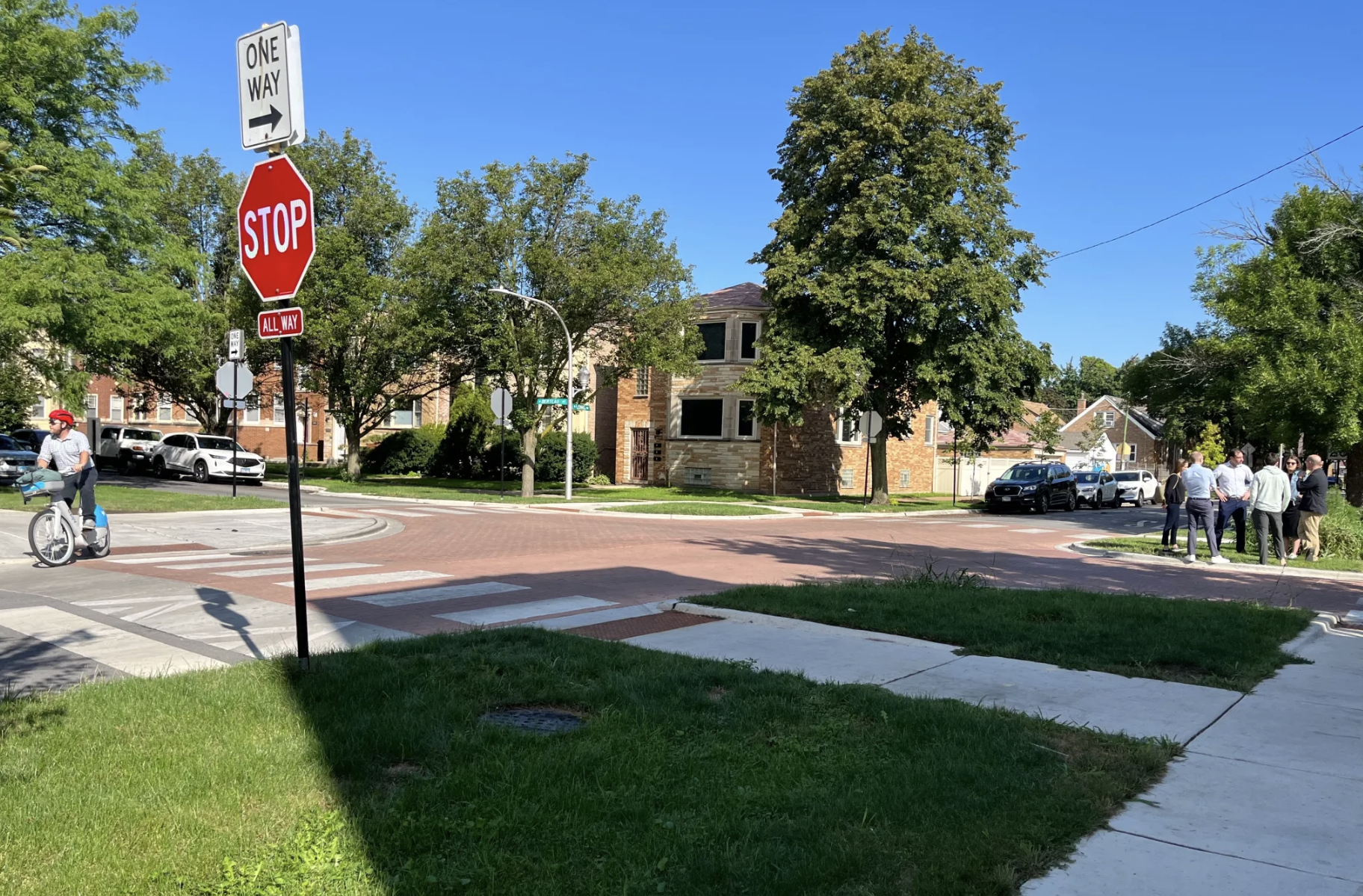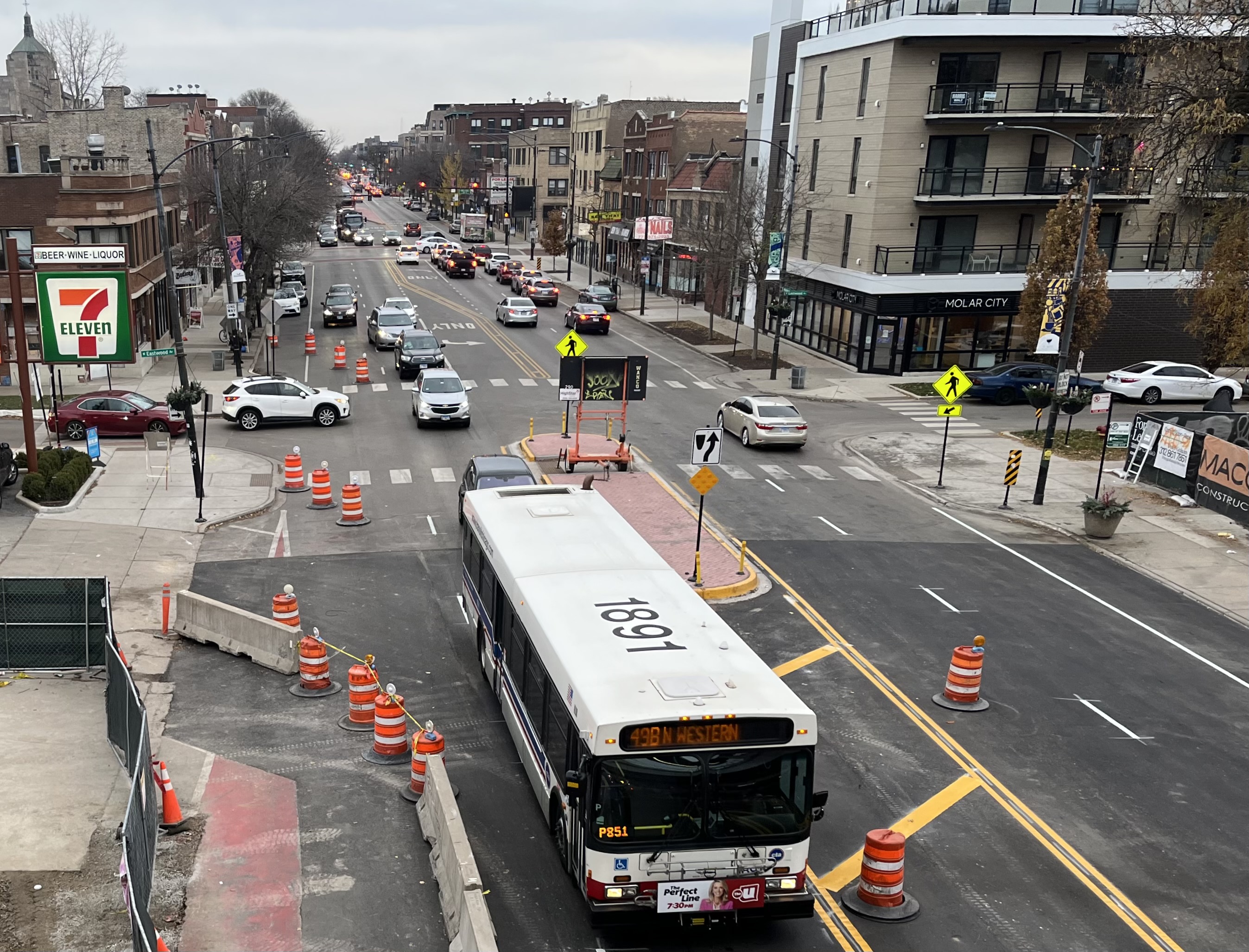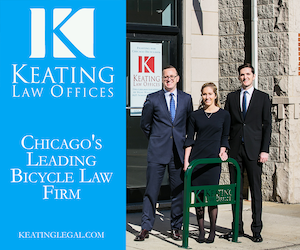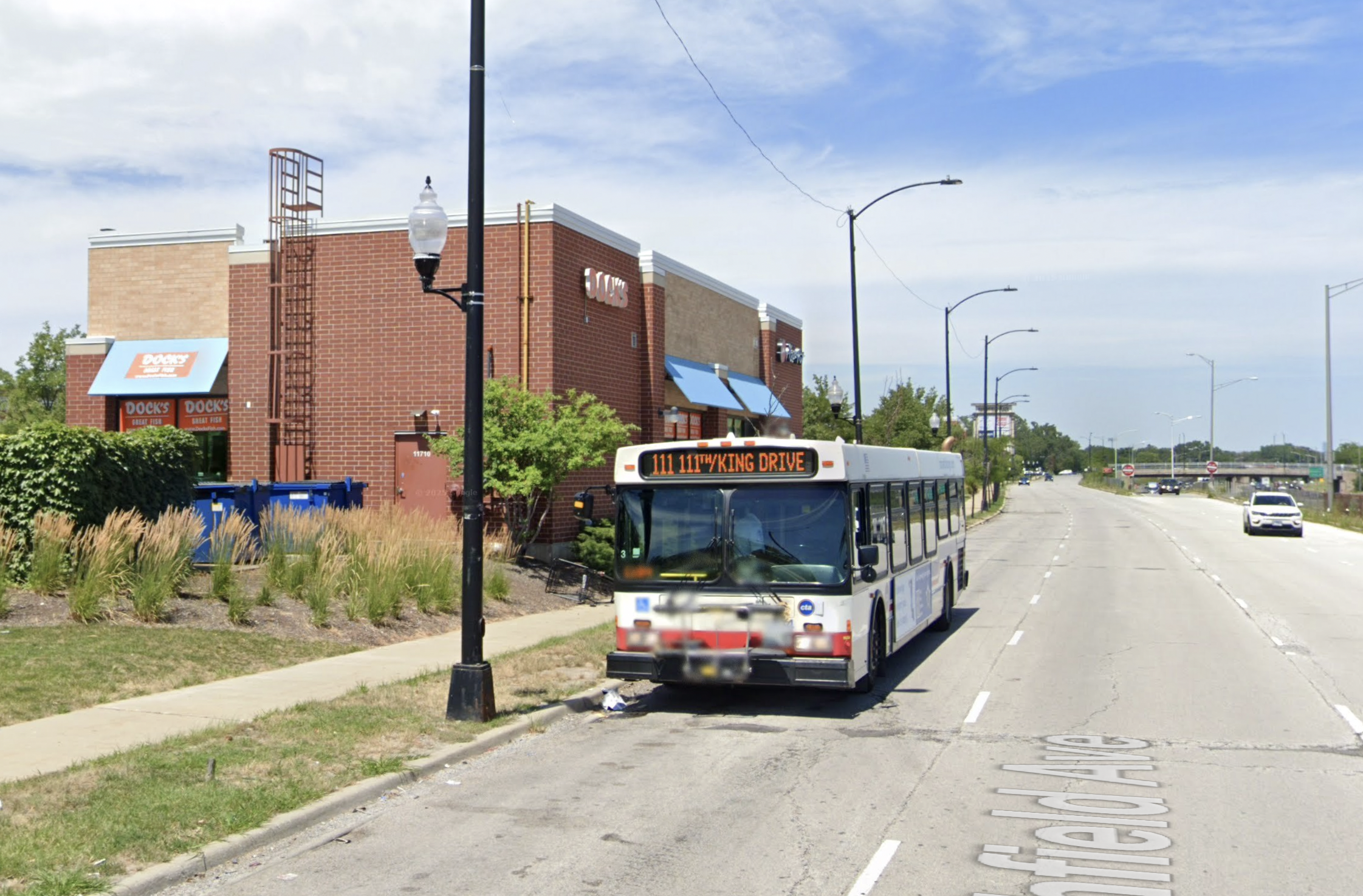
The Chicago Department of Transportation's recently released annual Chicago Traffic Crashes report looks at data from the past several years and discusses the agency's plan of action to reduce prevent serious and fatal crashes.
The report outlines several strategies to lower the collision rate, and says safety is improving. However, some livable streets advocates say there's more to the story. Here's a breakdown of the key findings of the study, with responses from advocates.

"Chicago continues to make progress in reducing serious crashes and traffic fatalities thanks to ongoing safety infrastructure projects led CDOT," said Active Transportation Alliance Advocacy Manager Alex Perez, "However, this year's report underscores that more work remains to be done. Slowing vehicle speeds and investing in safer intersections and crossings for pedestrians must remain key priorities in the year ahead."
The number of people seriously injured or killed in crashes is typically at its highest during the warmer months. Last year, there were 16 crash deaths in May, or 12 percent of the year's 130 fatalities. The highest number of pedestrian deaths in 2024, five, also happened in May.
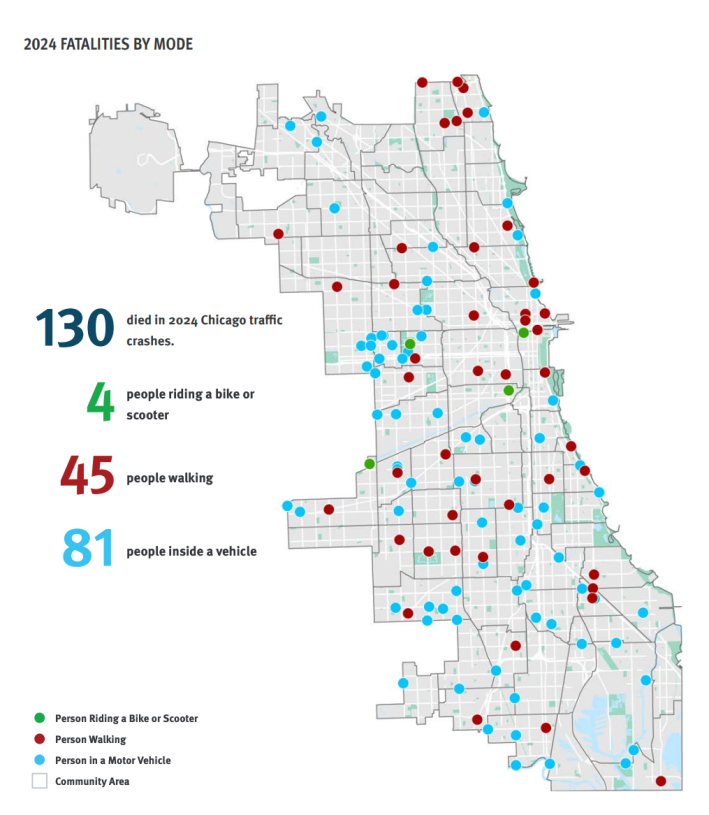
The most common type of 2024 collisions resulting serious or fatal injuries was (right) angle, aka T-bone, crashes at 24 percent these collisions, followed by turning crashes at 21 percent. These numbers were similar to previous years.
Pedestrians suffered the highest number of hit-and-run crashes last year, 42 percent of them. The driver who struck them was typically between the ages of 20 and 30.
In 64 percent of pedestrian fatality cases in 2024, the driver who struck the victim was piloting a larger vehicle such as an SUV, pickup truck, or van. The crashes typically occurred on a local road or street, with people usually walking in the in the roadway, ofter crossing in a crosswalk, when the motorist hit them.
"Another critical finding is that state-controlled roads remain among the most dangerous," Perez said. "With 44 percent of Chicago's high injury network corridor miles under the jurisdiction of the Illinois Department of Transportation, strong collaboration between CDOT and IDOT is essential to reduce serious crashes and save lives on these corridors."
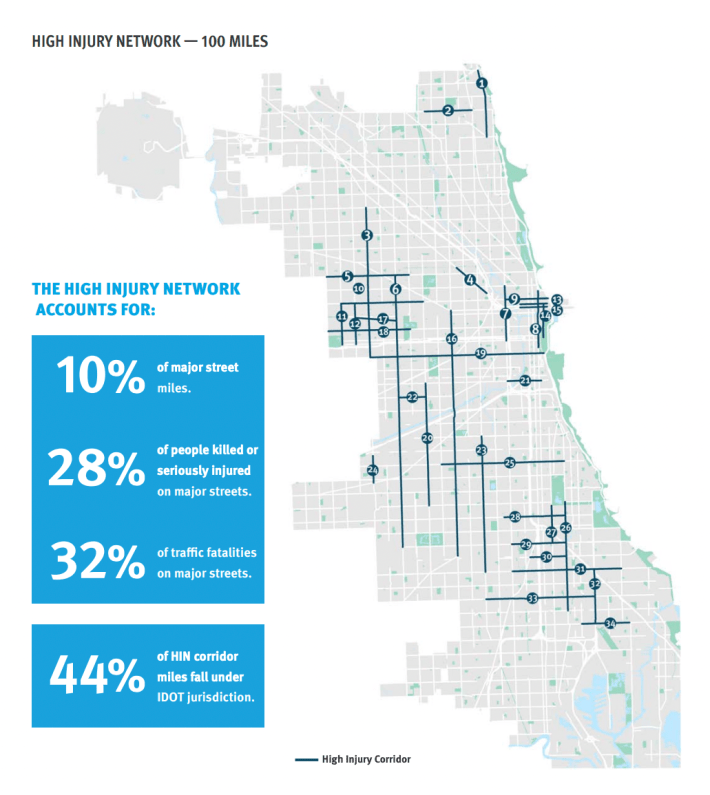
The highest number of severe traffic crashes have happened in the Central Business District, followed by the South and West sides. According to the report, the neighborhoods in these parts of town with the highest severe crash density and seen the greatest reduction in serious and fatal collisions between 2021 and 2024.
Citywide, there was a 18.5 percent decrease in people killed or seriously injured during this period. But in Austin, West Garfield Park, East Garfield Park, and North Lawndale, there was a 39 percent reduction. Pedestrian and bike fatalities dropping by 69 percent in these communities.
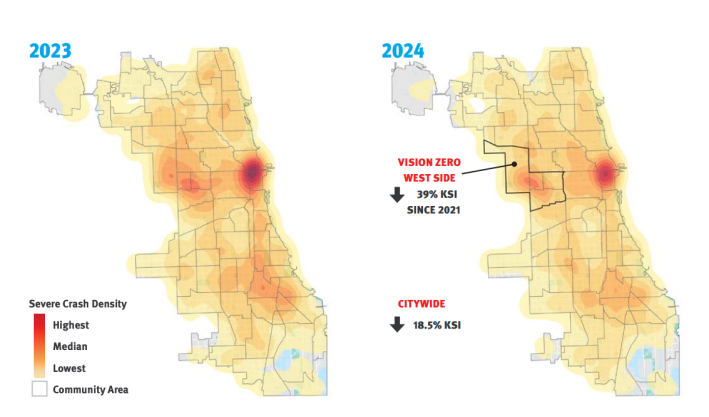
"We also commend CDOT for its recent investments on the South and West Sides to address historically high numbers of traffic crashes," Perez said. "Yet, the data make clear that these communities continue to experience a disproportionate share of traffic violence. Continued commitment, resources, and coordination are vital to ensure safer streets for all Chicagoans."
Last year, 1,896 people were seriously injured in crashes, the lowest number since 2012. And there was a 30 percent drop in traffic fatalities from 2021 to 2025, with a 60 percent drop in the number of people killed while riding a bike or scooter.
The report credits the installation of safety infrastructure, which is probably partly true. But it's also likely due to the spike in road deaths during the COVID-19 pandemic, when fewer drivers on the road made it easier for motorists to travel at potentially deadly speeds.

However, Nik Hunder, who's part of the leadership team at Chicago, Bike Grid Now!, argued we should take the Chicago Traffic Crashes study with a grain of salt. "We celebrate with CDOT that there were six fewer [bike and scooter deaths in Chicago in 2024 (four) than 2023 (ten)], but CDOT has cherry-picked their data to claim success," he said. "Crashes involving bicycles have been on the rise since the implementation of the City's Chicago Cycling Strategy [in spring 2023]. In 2022 through November, there were 1,557 crashes and 75.4 percent resulted in injury. In 2025 through November, there were 2,323 crashes with 72.2 resulting in injury, a 49 percent increase. Even this is likely to be an undercount in a phenomenon well documented by the National Institute for Health. None of the reported crashes were cyclist-on-cyclist crashes which is a stark reminder that bikes don't kill people, cars kill people."
Through analyzing the data, CDOT has concluded that the three key issues that contribute to serious injuries and deaths are size and speed of vehicles; reckless driving; and persistent inequities. The report also discusses strategies to make the streets safer. These include converting two-way streets to one-way; raised crosswalks; raised intersections; bus boarding islands; protected bike lanes; context-sensitive lane widths; and left turn traffic calming.
The report also includes a list of improvement projects across the city. For instance, on Commercial Ave from South Chicago Avenue to 90th Street, CDOT has installed bike lanes and make other street modifications to make walking, riding transit, and driving safer as well.
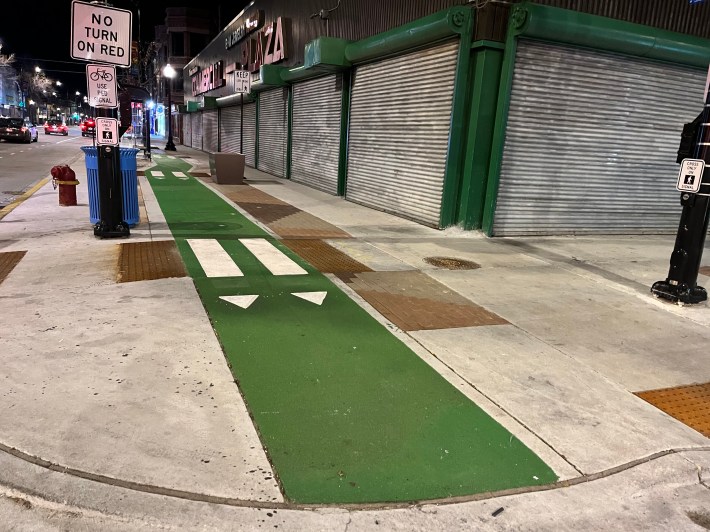
And CDOT highlights how on Homan Avenue between Grenshaw and Lexington streets, curb protected bike lanes and sidewalk bump-outs were installed as part of a street repaving project.

"It's great to see that safety tools like protected bike lanes and raised crosswalks are already helping to reduce traffic fatalities," said Kevin Bischel, Vice President of Milhouse Engineering and Construction, which helped with the report. "When we focus on intentional transportation design, streets become safer for drivers, pedestrians, and cyclists, and I'm confident this trend will continue as the Chicago Department of Transportation moves forward with its safety infrastructure investment plan."
View the Chicago Traffic Crashes report here.

On November 12, SBC launched our 2026 fund drive to raise $50K through ad sales and donations. That will complete next year's budget, at a time when it's tough to find grant money. Big thanks to all the readers who have chipped in so far to help keep this site rolling all next year! Currently, we're at $1900, with $48,100 to go, ideally by the end of February.
If you value our livable streets reporting and advocacy, please consider making a tax-exempt end-of-year gift here. If you can afford a contribution of $100 or more, think of it as a subscription. That will help keep the site paywall-free for people on tighter budgets, as well as decision-makers. Thanks for your support!
– John Greenfield, editor
